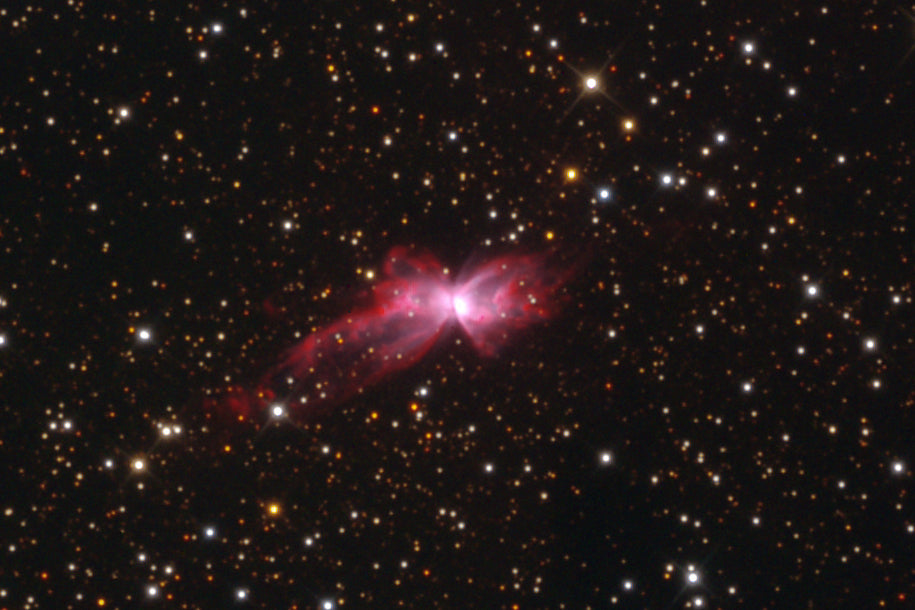Telescopes have been instrumental tools for astronomers, amateur skywatchers, and researchers for centuries, providing us with the means to explore the cosmos and observe distant celestial wonders. Understanding which lens is used in a telescope and how optics affect your astronomy experience is essential before you embark on this galactic voyage.
The Essentials of Telescope Optics
Understanding the fundamentals of telescope optics is necessary before we solve the riddle of which lens is used in a telescope. The objective lens and the eyepiece lens are the two primary types of lenses used in telescopes, and each has a distinct function in offering breathtaking sights of the galaxy.
1. The Objective Lens:
The objective lens is the larger of the two lenses in a telescope situated at the instrument’s front end. It serves as the celestial hunter, capturing and concentrating the faint light from distant objects in the universe. The telescope’s overall performance is significantly impacted by the objective lens’s build quality and craftsmanship. Meticulously designed with an aim for precision and minimal optical imperfections, the objective lens acts as the sentinel guarding the gateway to the universe.
2. The Eyepiece Lens:
Positioned near the eyepiece or viewing end of the telescope, the eyepiece lens, also known as the ocular lens, takes on the role of the cosmic tour guide. Its primary function is to magnify the focused image created by the objective lens, allowing observers to explore and study the intricacies of celestial bodies in detail. The eyepiece lens offers a realm of versatility, as changing it can seamlessly adjust the magnification, adapting to your astronomical quest.
Varieties of Lenses Utilized in Telescopes
Now that we’ve unlocked the mystery of which lens is used in a telescope, let’s get deeper into the diverse types of lenses employed for each role and their unique contributions to our cosmic adventure.
Objective Lens Varieties
1. Achromatic Lens:
Achromatic lenses stand as a popular choice for objective lenses, renowned for their practicality. Comprising two lenses made of different glass types, these lenses work in harmony to combat chromatic aberration, the optical phenomenon responsible for colour fringing. Achromatic lenses offer commendable image quality at a budget-friendly price, making them a favoured choice among amateur astronomers.
2. Apochromatic Lens:
The apochromatic lens, often abbreviated as APO, epitomises optical excellence. It employs multiple lens elements to further curtail chromatic aberration and deliver impeccable, colour-corrected images. These lenses are a preferred choice for seasoned astronomers and astrophotographers seeking the epitome of clarity and precision in their cosmic journeys.
Eyepiece Lens Varieties
- Barlow Lens: Its extreme adaptability, getting a closer look at the stars and planets could not be simpler. Without a lens change, the Barlow lens functions as your magical zoom button and depicts far objects closer.
- Plossl Eyepiece: Plossl eyepieces hold a cherished spot in the hearts of astronomers for their expansive field of view and exceptional image quality. Their versatility allows them to excel in various astronomical observations, catering to a diverse range of celestial wonders.
- Wide-Angle Eyepiece: These are best for observing large astronomical phenomena like star clusters and nebulae. The reason is that they provide a more wide-ranging and panoramic view of the universe, providing a better perspective if you are fascinated by the vastness of the night sky.
Selecting the Ideal Lenses for Your Cosmic Adventure
The question which lens is used in a telescope can be answered by selecting the appropriate lenses for your telescope, which depends on your personal goals and your budget. When choosing your celestial partner, consider the following important factors:
- Telescope Type: The optical design of different telescopes, such as refractors, reflectors, and compound telescopes, may require specific lens types. In these scenarios, the question of which lens is used in a telescope arises. Ensure your lens selection aligns with the telescope’s optical configuration.
- Budget: High-quality lenses promise a remarkable experience, but financial considerations are essential. Strike a balance between your budget and the performance you desire to make the most of your celestial journey.
- Astronomical Interests: The type of celestial objects you wish to explore is a pivotal factor. Planetary viewing may necessitate different lenses than deep-sky astrophotography. Tailor your lens selection to your astronomical interests.
- Magnification Needs: The secret to a successful observation is knowing what levels of magnification you want to use. You can easily fine-tune your cosmic perspective by swapping your eyepieces or by using a Barlow lens to adjust the magnification.
The first step toward figuring out “which lens is used in a telescope“? Investing in the correct telescopic lens is the answer to the question itself.
The Pie Matrix is the perfect resource to use when you’re prepared to go out on your cosmic journey. Your stargazing will reach new heights with its incredible selection of telescopes, which includes mounts, tripods, and many lens options. Their robust, adjustable tripods make setup a pleasure, and their lightweight construction makes them portable. These telescopes are not only incredibly feature-rich and efficient, but they also have an incredibly sleek and fashionable style.


Share:
Difference Between a Telescope and a Binocular
Difference Between a Telescope and a Binocular